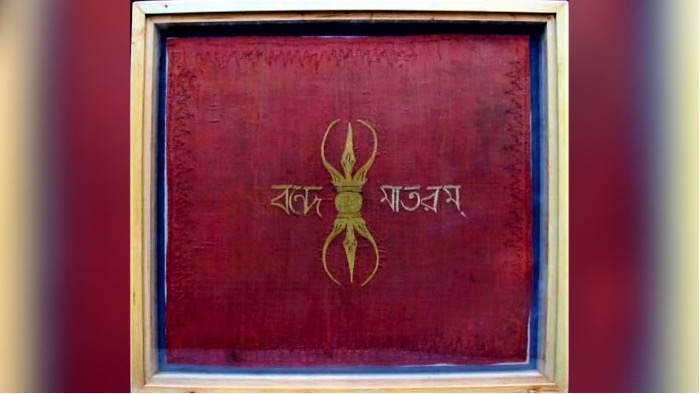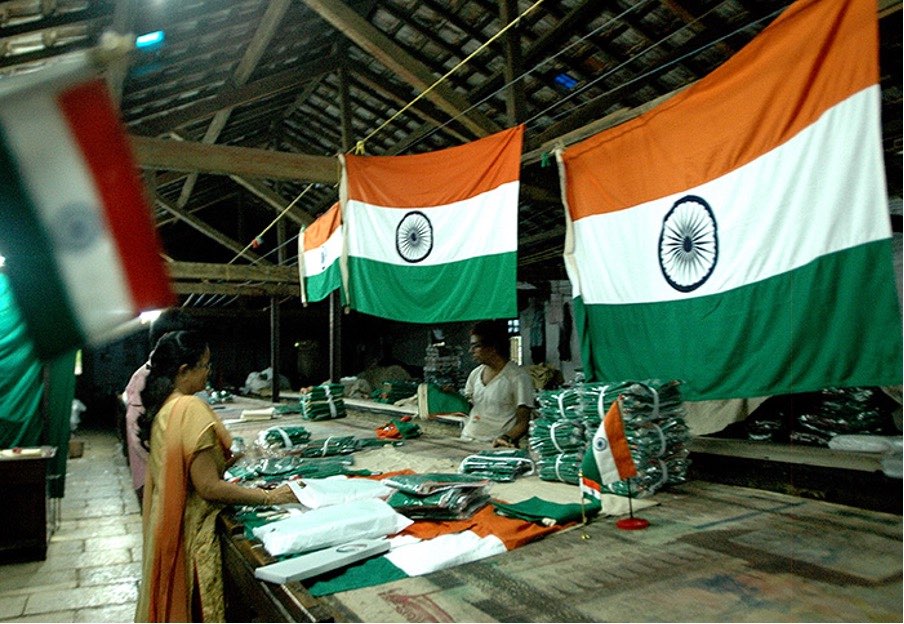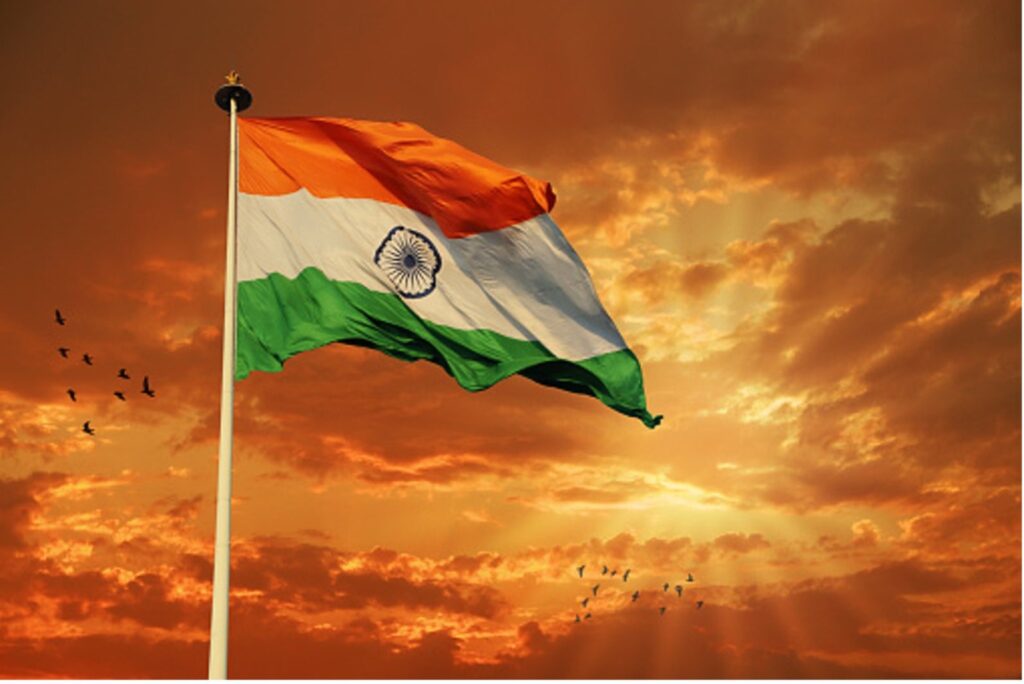Art has always been a fervent means of protestation since ages. For example- the anti-apartheid songs which discussed explicitly peoples’ outrage over ‘pass laws’ and ‘forced relocation’, garnered global attention and support to the cause, which was then limited to the people in South Africa. The impact of music was remarkably huge, that the South African Broadcasting Corporation had to further rigidify its broadcasting guidelines, preventing “insurgent” music from being aired. All over the world, artists and activists’ resort to music, painting and other forms of art to create awareness and also vent against injustice. India, during its fight for independence, united under the clarion call of “Vande Mataram” and it manifested itself in the form of a flag, which united the nation under one symbol. The first tricolour, known as Prinsenvlag, was adopted by newly formed Netherlands during the ‘Eighty years’ war’ in 1579 as a symbol of independence. This tricolour influenced the Le Tricolore, a blue, white, and red flag, adopted to symbolise the overthrow of monarchy during the French Revolution in 1790. This influenced many other nations, India being one of them, to adopt tricolors as a mark of protest and a symbol of unity. The Tiranga, as we know it today, has undergone several changes before attaining its final present form.
1) Sister Nivedita's Flag

In 1904, while on her way to Bodh Gaya, Sister Nivedita came across the Vajra symbol of Buddhism which has a mention in Hindu mythology as a weapon, wielded by Gods like Indra and Durga. In 1905, she designed a flag with a red surface showing a Vajra with ‘বন্দে মাতরম’ written. It was used by people at a Congress rally in 2006 but did not attract national attention and was soon forgotten. Years later, in 2015, reputed Indian vexillologist, Sekhar Chakrabarti, discussed this flag at an international flag conference and brought global attention to what was probably the first Indian flag.
2) The Calcutta Flag, 1906
Although Sister Nivedita’s flag didn’t receive attention on a large scale, people started to believe in the urgency of the need for a national flag when the partition of Bengal was proclaimed by the British government in 1905. In order to protest the decision by the British government, the first tricolour was unfurled on 7th August, 1906, during a rally, by Sachin Dra Prasad Bose, who is believed to have designed it, alongside Sukumar Mitra, in Parsi Bagan Square in Calcutta. This flag, later, came to be known as the Calcutta Flag or the Lotus flag. The flag had three horizontal bands of equal measure with the top being orange, the centre yellow and the bottom green in colour. It had eight half-opened lotus flowers on the top stripe, and a picture of the sun and a crescent moon on the bottom stripe. The words ‘Vande Mataram’ were debossed in the centre in the Devanagari script.
3) The Berlin Flag, 1907
This flag was the first to introduce the colour saffron into the tricolour and also the first to be unfurled at an international forum in Stuttgart, Germany on August 22, 1907 by Madame Bhikaji Cama, Vinayak Damodar Savarkar and Shyamji Krishna Varma. The shape and design of the flag was identical to the Calcutta flag, the only difference being the colour saffron at the top, green at the bottom and eight suns on the top stripe. The flag got its name after the outbreak of World War I, when it was adopted by the Indian Revolutionaries at the Berlin Committee.
4) The Home Rule Flag, 1917
The Home Rule Movement, established by Bal Gangadhar Tilak and Annie Besant, to demand the status of a Dominion for India within the British Empire like Australia and New Zealand, adopted a new flag which featured red and green stripes with the Union Jack at the upper left-hand corner and seven stars in the middle, representing the stars in the Saptarishi constellation. The flag also had a crescent moon and a star at top right corner.

5) Gandhi’s Flag, 1931
Pingali Venkayya, from Machilipatnam in present-day Andhra Pradesh, tried to devise a common national flag back in 1916 with the support of Mahatma Gandhi, who suggested the integration of the “Charkha” or spinning wheel on the flag, emblematizing “the embodiment of India and the redemption of all its ills“. It had become a symbol of the economic regeneration of India under Gandhi’s leadership. The initial design featured a charkha on a red and green background where red represented the Hindus and green symbolised the Muslims.
However, Gandhi observed that the flag failed to represent all the religions of India. Thus, another version of the flag was designed by Venkayya, which was a tricolour featuring white on top, representing all minority religions, green in the centre, representing Muslims and red at the bottom, representing Hindus, along with a “Charkha” drawn across all three bands. This flag was first unfurled at the congress party meeting in Ahmedabad and was widely accepted and used during the freedom movement.
6) The Tiranga, 1947
Gandhi’s flag was criticized for being communal in nature and thus, a new flag had to be created. The Congress Working Committee appointed a seven-member Flag Committee on 2 April,1931 after a resolution was passed noting that “objection has been taken to the three colours in the flag on the ground that they are conceived on the communal basis.” The final design of the flag was decided when the Congress committee met in Karachi on 1931. The tricolour flag then adopted was designed by Pingali Venkayya as well, but it featured three horizontal strips of saffron, white, and green, symbolising courage, truth and peace, and faith and prosperity, respectively with a “Charkha” in the centre depicting the economic regeneration of the country.
Right before independence, in August 1947, the Constituent Assembly was called upon to discuss the flag of the India. They set up an extemporaneous committee led by Rajendra Prasad and consisting of Abul Kalam Azad, KM Panikar, Sarojini Naidu, C. Rajagopalachari, KM Munshi and Dr. B.R. Ambedkar as its members. The Flag Committee was constituted on 23 June, 1947 and it began deliberations on the issue. On 14 July 1947, the final decision to include the Ashokan “Dharma Chakra” instead of the “Charkha” was taken to prevent any communal undertones, thereby giving us our final and permanent flag. The Tiranga was unfurled for the first time on 15 August, 1947, celebrated as Independence Day in India.

The Flag Code of India 2002
The Flag Code of India (2002) is a set of rules and provisions that are applied to the display and the usage of the national flag. According to it, Karnataka Khadi Gramodyoga Samyukta Sangha (KKGSS), an organisation established on November 1, 1957, at Bengeri village near Hubli city in Dharwad district is the only official manufacturer and supplier of national flags in the country, approved by the Bureau of Indian Standards (BIS) to produce the national flag. There are specifications regarding the kind of cloth used to make the flags. Before changes were introduced in the rules, only flags made by “hand-spun and woven wool or cotton or silk khadi bunting” were permitted while the import of machine-made flags was banned in 2019. The revision in the ruled brought in 2022, states “The National Flag shall be made of hand spun and hand woven or machine made, cotton, polyester, wool, silk khadi bunting.“
The precision that goes into making a flag is unmatched. The cloth, a material that is much stronger than jeans, is spun at KKGSS’s weaving unit in Bagalkot and divided into three piles, each dyed with one colour of the Indian flag. The cloth is then cut to size and the blue Ashoka chakra is printed on the white cloth. The three pieces are sewed together to make the Indian flag. The entire process is done using approximately sixty sewing machines to maintain precision while stitching. The material undergoes an eighteen-time quality check before it can be used. The width and length of the flag should be in the ratio 2:3 and the chakra is to be printed on both the sides of the flag. The BIS inspects each batch that is shipped and even the slightest mistake can result in a whole batch getting rejected.

Earlier, the display of Indian flags by the general public was prohibited but the rule was changed and as Section I of the Flag Code (2002) states- “There shall be no restrictions on the display of the National flag by members of general public, private organizations, educational institutions, etc., except to the extent provided in the Emblems and Names (Prevention of Improper Use) Act, 1950. The second section maintains the dignity and honour of the national flag by dictating three years imprisonment, or a fine, or both, as punishment for anyone who, within public view, “burns, mutilates, defaces, defiles, disfigures, destroys, tramples upon or otherwise brings into contempt (whether by words, either spoken or written, or by acts) the Indian National Flag.” Among other rules, the code also prohibits the use of the flag as a cloth to cover tables, lecterns, podiums or buildings, or be draped from railings.
With Independence Day approaching soon, one must always recall and remember the first few lines of introduction to the Flag Code which say- “The Indian National Flag represents the hopes and aspirations of the people of India. It is the symbol of our national pride. Over the last five decades, several people including members of armed forces have ungrudgingly laid down their lives to keep the tricolour flying in its full glory.”
Written by – Arzoo Kumari
Edited by – Tithi Sarkar
